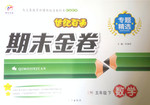题目内容
【题目】Every Thursday afternoon, my art history class meets not in our usual lecture hall but in the Yale University Art Gallery(美术馆).
We spend our one-hour class discussing two or three of the paintings, many of which are by artists that we have already studied in class.
The professor begins by selecting one work of art. After giving us a quick background on the artist, he'll open up for class discussion. Everyone is strongly encouraged to give opinions to the work. Not every piece we study is necessarily famous or striking in appearance and subject matter, yet we always manage to make some interesting observations.
In America, professors always take every opportunity to push textbooks aside and expose students to real world experiences.
With some creativity, almost any subject can be applied to such beyond the classroom learning.
My art history class trips to the gallery are but one example.
Many other subjects also offer opportunities to learn outside the classroom, for example business psychology, art, journalism and biology.
A friend of mine from Yale taking an advanced psychology course spends every Saturday working with mentally disabled children.
Her mornings are spent playing with the kids and studying their sometimes uncontrolled behavior. Then in the afternoon she writes a report on her observations.
Students generally appreciate these unique learning opportunities. They're almost always fun and interesting, and professors like them because students learn so much in just a few short months.
No one denies (否认)the value of classroom lerning. But it can only take students so far.
Slides and textbooks may do a good job of carrying facts and dates, but creativity and originality (创造性)of thought cannot be taught. They can only be got through first-hand experience.
【1】 The writer studies art history __________.
A. in a lecture hall
B. in an art gallery
C. in a simple way
D. in a practical way
【2】 In American universities it is popular for professors to __________.
A. create textbooks by themselves
B. teach their lectures through real world experiences
C. ask their students to memorize the texts
D. share their experiences with the students
【3】 “Slides and textbooks” in the last paragraph refer to __________
A. the books students may use in class
B. the practical experience
C. the theoretical experience
D. the advice from the professors
【4】 The writer holds the opinion that __________.
A. learning outside the classroom is the best way
B. teachers should develop students' creativity
C. professors had better shorten their lectures
D. students should put their textbooks away
【答案】【1】 D
【2】 B
【3】 C
【4】 A
【解析】【1】 从文章第一、二、三段可以看出作者是以一种贴近现实的方式学习美术历史课的.
【2】 从第四段中的“always take every opportunity to push textbooks aside and expose students to real world experiences”可以看出美国大学教授非常喜欢的授课方式是“通过真实地体验世界”来传授知识。
【3】 由"Slides and textbooks. . . taught. ”一句可知,slides和textbooks是用来教给学生事实和日期等知识的,而不能教给学生创新思想和创造性思维. 最后一句则告诉我们,学生的创新思想和创造性思维需要直接经验获得。由此可推知. slides and textbooks是与first-hand experience相对的教学素材,即理论知识。
【4】 文章开始说的是作者上美术历史课不在授课大厅而是在美术馆上的经历,接着说很多课( business. psychology, art, journalism and biology)都可以在教室之外的地方上,文章最后一段又说“原创思想是教不会的,它只能从直接经验中获得”,由此可以推断出作者的观点。

 世纪百通期末金卷系列答案
世纪百通期末金卷系列答案